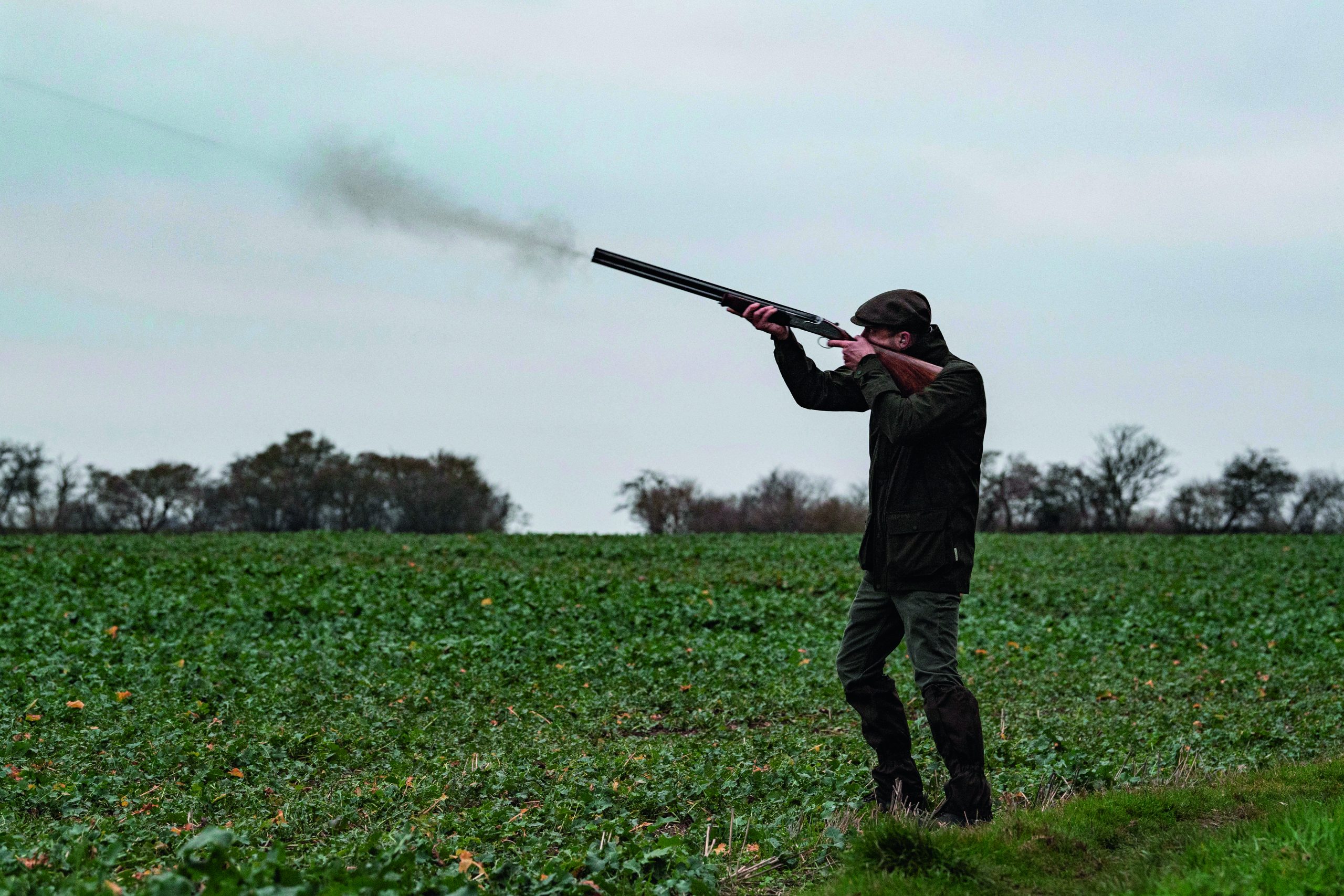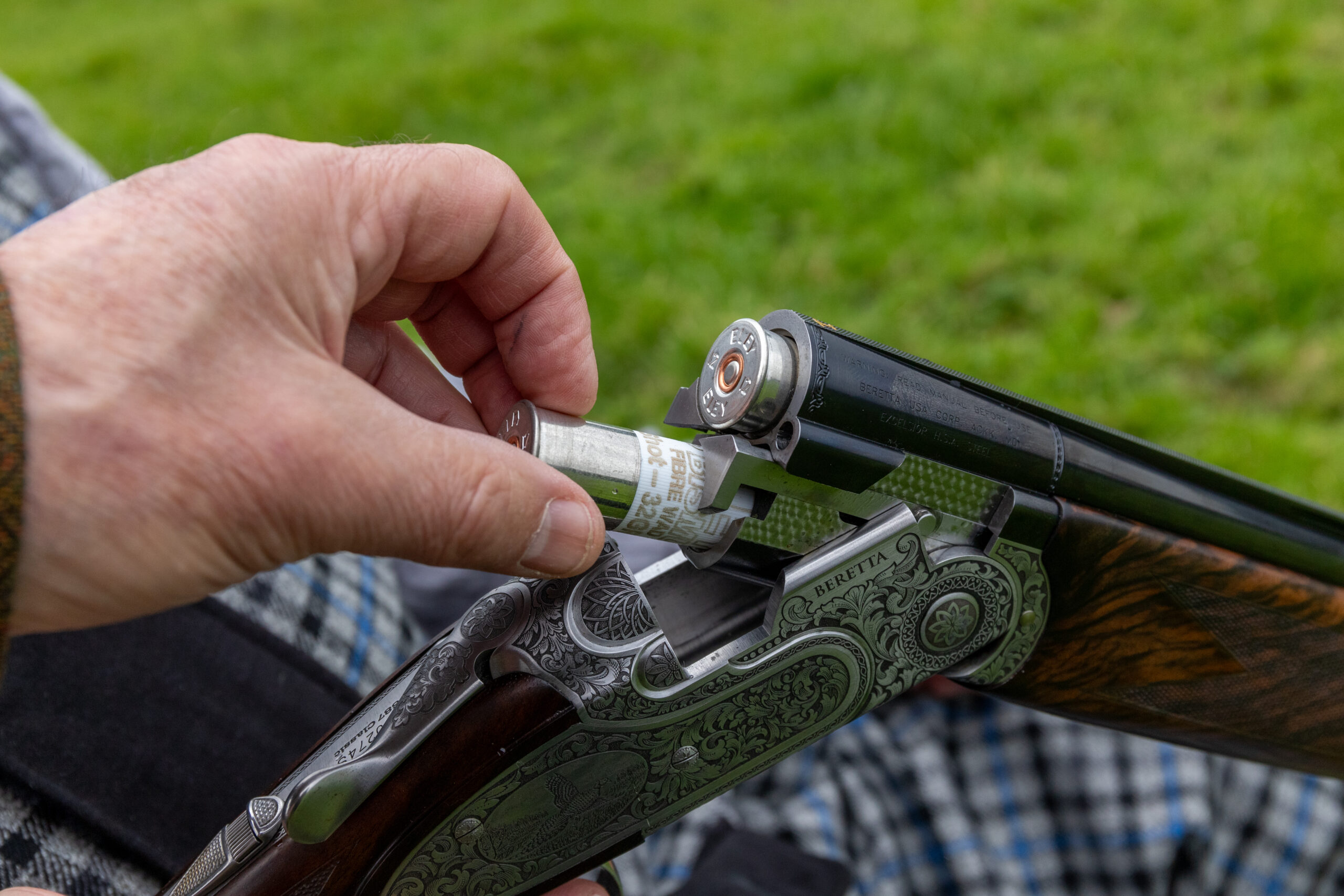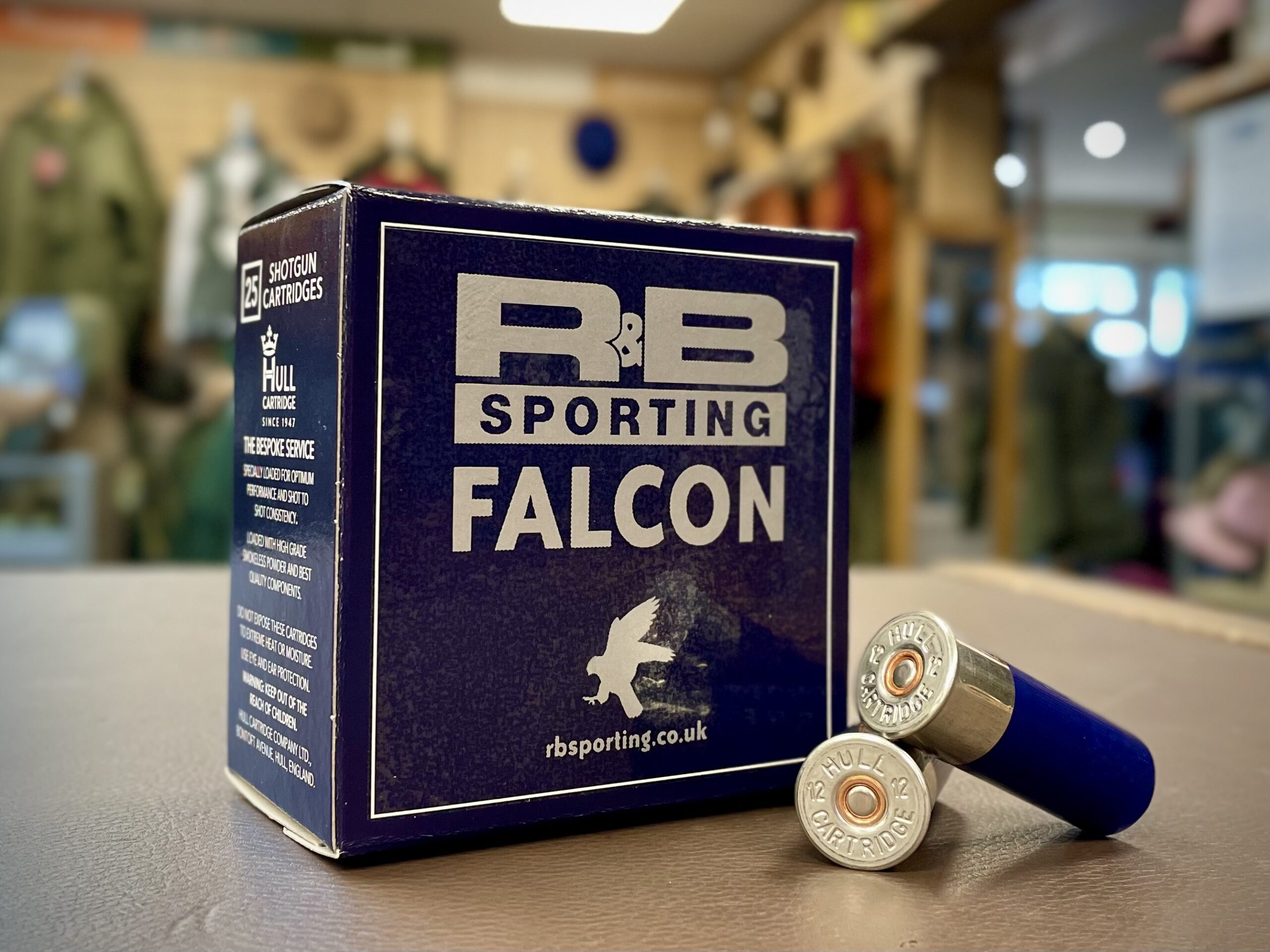Using non-toxic shot is a whole new ball game and this is why
The age-old issue of shot sizes has been debated and refined over decades, which is why using non-toxic shot is a whole new ball game, says Richard Atkins

It will take time to learn how best to use steel shot
The brief for this article was to look into what we already know – or rather, think we know – from our past experience with lead shot, and to consider that in relation to what we are told as a result of moves toward using non-toxic shot, primarily steel. It is a massively steep learning curve for all concerned. For shooters, of course, but the cartridge industry has been put in an invidious position.
Non-toxic shot and the food chain
This situation has come about due to the abruptness with which a proposed ‘five-year voluntary initiative towards phasing out lead for live quarry shooting’ became a ‘non-toxic shot for game entering the food chain’ in the coming game season. This latter mandate was largely brought about by the change in lead-level restrictions in game entering the food chain in Europe, courtesy of the European registration, evaluation, authorisation and restriction of chemicals (REACH) regulations there.
The UK REACH authority seems set to mirror the continental lead in this. Now our Health and Safety Executive (HSE) has embarked on an investigation with a view to broaden the scope of where lead shot and other projectiles could be outlawed, and in a shorter timescale than the voluntary phase out proposed. This has put cartridge manufacturers – who are already grappling with developing cartridges for this game season loaded with steel shot and biodegradable full-cup wads that steel shot demands – in an extremely difficult position. (Read will my shotgun be safe with steel shot?)
Recent tests reported in this magazine have shown clearly how supremely effective the leading lead-shot game cartridges, mostly developed for high-bird shooting, have become. Even with fibre wads, as demanded by many shoots, pattern percentages proved exceptional. This, combined with the heavy lead pellets, ensured that a cartridge capable of delivering lethal hits to the tallest game bird a sportsman might raise his gun to, is readily available. The subsequent penetration tests conducted for and reported in Sporting Gun also confirmed the superior penetration abilities that the high-performance lead shot loads can provide. The key question now is, will steel shot cartridges be able to match what we have become used to, performance wise, in the field?

Lead shot has become supremely effective
Long evolution
Lead shot loads and shot sizes have evolved continuously over many years to meet changing needs brought about by developments in the sport. Changes include increasing interest in some types of shoot, with high-bird shoots a good example. As mentioned, all major UK cartridge makers have added high-performance game cartridges into their product line. Developments are also seen in guns (as in over-bored bore sizes and longer forcing cones) with a trend toward much longer interchangeable chokes, too. Staying with the high-bird example, it will be noted that this increasingly popular sport has seen the introduction of previously uncommon shot sizes, with lead-shot game cartridges available in the UK in shot sizes 4.5, 5.5 and 6.5 as well as 4XTRM, besides the long-established standard sizes.
These cartridges and shot options were introduced to provide a range of shot load weights and shot sizes such that the ideal cartridge is available to meet every situation. In 12-bore, options range from 28 grams (1oz) of No 6 or 7 for closer lowland game birds and decoyed pigeon to mighty 36 grams No 4 for the tallest late-season pheasant. In this context, ‘ideal’ means a cartridge that will provide the pattern and penetration required to kill cleanly, at the range involved and through the chokes in your gun (almost all ‘English’ side-by-sides will have fixed chokes) without smashing closer birds and, importantly, being comfortable to shoot in your gun. Such a rapid change to a new material for the bulk of our shooting will raise a host of queries and potential problems to overcome.
Cartridge companies are striving valiantly to provide suitable non-toxic shot for the coming season. We cannot be sure how well the fruits of their labour will meet the requirements of the various types of game and game shooters. Close scrutiny of the good and less good aspects of how things unfold will be essential for future cartridge developments – and vitally important for the sport as a whole.

Lead shot is available in many sizes to cater for every situation
Size matters
Shot sizes for various purposes, live quarry and target shooting, have been discussed among shooters for years. This, and which choke to use for what purpose, has engaged, mystified and entertained many of us numerous times. (Read more on shot sizes for game here.)
The clay target side of using lead shot settled down quite well. There are some fairly easy demarcations dictated largely by the rules of the various disciplines and target types. Skeet shooters typically use UK No 9, while first-barrel trap 7.5 is typically used. That size is often used for second-barrel use, too, especially for DTL. For second-barrel Universal and Olympic trap, UK No7 shot is often preferred because it retains its velocity and hitting power that bit further out for these tricky, edgewise-on, fast-departing targets. This works best with premium No 7 shot with high-antimony content as this shot is harder than standard mid-range and budget cartridges. Harder shot deforms less, so patterns more closely and retains energy longer.
There are plenty of premium clay-target cartridges to choose from with regular winners of major international competitions holding fine, long established records of success. Most notable are Italian cartridges. Names such as Baschieri & Pellagri, Clever, Fiocchi and RC immediately spring to mind. Between them, they have a won a majority of all world and Olympic class medals over a great many years.

Bioammo Rex: This 70mm cartridge has a 24g steel shot load of 3.25mm size, which is UK size 6.5
Note that some continental shot sizes do not equate precisely to UK shot sizes. Italian shot sizes are typically one size larger than the UK size. This means that to use UK size 7.5 you need to buy Italian shot size No 8, and for UK No7, you need Italian size 7.5. Even though this has been so for a great many years, it is still not uncommon to find shooters who had not realised that. Acquainting yourself with the actual metric diameters for the shot size marked will help avoid confusion.
Clay shooters do not yet face the need to use non-toxic shot. Indeed, plenty of grounds do not permit the use of steel shot, primarily on safety concerns, including ricochet, and insurance. I have shot Winchester steel shot clay loads in Belgium through a variety of Winchester and Browning guns. I must admit, they performed well, even on longer clay targets, although recoil was more noticeable than with my usual lead loads. Whatever happens with clay targets, the efficacy requirements are less severe as, barring ricochets, only clay targets are involved. (Read how to deal with different clay targets.)
Shot size: what’s for what?

Shot size recommended for all types of shooting. Remember, when using steel shot, you will need to go up two sizes in most cases. Please note that for wildfowl, non-toxic shot must be used.
Steel in the field
The sporting sphere has more potential for variety, with regular game quarry ranging in size from snipe and woodcock to geese. Typical suggested shot sizes have evolved for the various game and will be well ingrained with regular sportsmen and women. The suggested shot sizes for each quarry can be found in the Eley shooter’s diary and elsewhere, ranging from 7 or 8 for snipe, 6 or 7 for everything from woodcock to grouse and 5, 6 or 7 for pheasant. Eley has added a note to the printed list of pellet sizes thus: … “recent research may result in recommended pellet sizes changing generally towards larger pellets than were used in the past.” This is an interesting statement. It indicates that research has been ongoing for some time with regard to lead shot and – even with the heavier pellets per size than steel shot – a need to increase the recommended pellet sizes identified.
Given that the recommended sizes have been around since before I started shooting (more than 60 years), one cannot help wondering what has brought about the change. If it reflects that heavier pellets are required to tackle quarry at greater ranges than once common, that is one thing. But that’s not the same as changing all shot sizes for what they have long been used for. The whole basis for the existing pellet sizes and shot loads reflects that larger quarry, at greater range, requires a heavier load of larger pellets to maintain adequate pattern and penetration. What is needed now is similar research with non-toxic shot pellet sizes and load weights, so that the new research can be compared with lead shot, for the benefit of all. Pellet energy and pattern density remain key where cartridge efficacy is concerned.
Some long-established guiding principles continue to be pertinent and remain a sound basis to work with because they apply equally to non-toxic shot. A prime example is that important conundrum of selecting the ideal pellet energy combined with adequate pattern-density balance for the task at hand.
The shot size chosen should be capable of imparting sufficient energy – up to at least the maximum shooting range the shooter feels competent to take the shot – to penetrate the quarry sufficiently deeply to adequately strike vital organs. Most importantly, there must also be ample such pellets in the pattern to provide a reasonable prospect that sufficient of these pellets strike the quarry to be sure vital organs are hit and give a clean kill.

Non-toxic shot has been used for wildfowling for many years, but how will it hold upon game shoots where plastic wads cannot be used?
The difficulty shooters have is that, against a backdrop of many years of experience with choosing the best lead shot load and shot size to suit our shooting needs, we now face a lack of tested and qualified information as well as a restricted choice of shot loads and sizes with steel shot.
With steel the primary shot material, we are particularly limited in our choices. Those with guns not proof tested for use with steel shot – hence restricted to standard steel cartridges – the choices are currently very limited indeed. Thanks to a CIP limit on 12-bore cartridge performance, with a velocity limit of 425 metres per second, a maximum momentum of 12Ns (Newton seconds) and a maximum shot diameter of 3.25mm, these parameters do not allow for the wide range of options that were once open to us. Note that cartridge makers have introduced a new size, that of Fe 4, which is fractionally smaller than UK No 3 (3.3mm), to take advantage of the largest steel pellets permitted for standard steel cartridges.
Advice we see regarding steel shot typically is to go up two shot sizes above the lead size you would normally choose. This indicates that where No 6 lead would be your usual choice, you now use Fe 4. That should be fine for a good selection of typical sporting field shooting. You cannot choose a larger shot option than Fe 4 for use in your non-steel proofed game gun. Nor are shot loads above 32 grams likely in 12-bore standard steel. This is due to the momentum limit, which would mean having to reduce velocity to remain within the limits. It soon becomes obvious that, although standard steel can prove effective, there are serious limitations as to load options for the more demanding aspects of live quarry shooting.
More choices
Eventually, high-performance (HP) steel cartridges will provide a modest improvement in choice. This will largely affect the shot sizes and shot load weight choices, thanks to a higher HP momentum and maximum shot-size limits. Velocity is unlikely to vary much between standard and HP cartridges because the maximum CIP velocity limit for HP cartridges is only fractionally higher than for standard steel at 430mps and 425mps respectively.
Given that shotgun cartridges often vary shot to shot by rather more than 5mps, cartridge loaders have little choice but to load slightly below this figure so that they do not fall foul of the CIP maximum. HP cartridges are, of course, only of benefit for those whose guns carry the steel proof fleur-de-lis symbol.
HP load options are, unfortunately, not for the thousands of UK shooters who own and use ‘English’ game guns, many of which are what we consider ‘lightweight’ construction. These were developed and built to meet the needs of the typical English types of game shooting. Although liked and appreciated elsewhere, it is here in the UK that so many fine such guns are still in use today, often handed down from father to son and daughter. Their thinner barrel walls and lighter construction make them unsuitable for use with HP steel shot. The UK Proof authorities have issued special guidance suggesting that, to avoid risk of ring bulges even when using standard steel cartridges, chokes of no more than ¼ are used. Evidently, the risk of trying some larger steel-shot sizes and higher-momentum HP cartridges is not recommended.
Cartridge makers have been concentrating on standard-steel game cartridges. This is because there are so many guns that should only use them and, of course, they can be used in steel-proof guns, too. Load options increase considerably with chamber length for HP steel loads up to 430mps velocity and 19Ns momentum for 89mm (3.5in) chambered 12-bore.
Options for 20-bore users with guns not steel proofed are further restricted by CIP rules. Velocity is reduced to 410mps; momentum 9.3Ns with a maximum steel shot size of 3mm. Steel-proofed 20-bore guns have greater options but do NOT match the 12-bore.
Limited choice
A browse through any major English cartridge maker’s catalogue will reveal literally dozens of lead game cartridge options when taking shot weight, shot size, wad type (fibre, felt or plastic) plus paper or plastic cased. Then there are calibre choices from 0.410 to 12-bore in a choice of cartridges to suit chamber length from 2in (50mm) up to 3in (76mm).
For the coming season, those who shoot game on shoots that can only sell their gathered game birds to a game dealer if shot with non-toxic shot will have vastly less choice of cartridge. While a few 20-bore options exist loaded with bismuth, these are expensive. Some steel-shot 20-bore cartridges may be available, but limited. The choice will be wider for 12-bore, but compared with what exists in lead-shot options, choices will be limited. Clearly there is much more that requires attention. We will endeavour to tackle more in a future article. For now, read up where you can, enquire of cartridge makers and associations, and please let us know how you are getting on with steel shot. Here is hoping for a good season, despite all the current issues.








